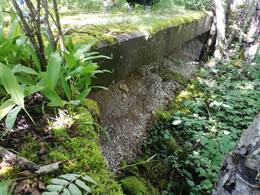Žymaus Muhu kalvio prisiminimai
Andrus Müüripeal (1877-1945) arba Puka Andrus iš Lepiku kaimo, Puka, prieš karą buvo garsus Muhu kalvis.
Andrus Müüripeal (1877-1945), dar žinomas kaip Puka Andrus iš Pukos kotedžo Lepiku kaime, prieš karą buvo garsus Muhu kalvis.
Jis kartu su kitais salos kalviais dirbo prie baterijos statybos Võiküla mieste. Kai darbuotojai pradėjo montuoti vieną iš ginklų, paaiškėjo, kad laikiklio varžto sriegis buvo apdirbtas taip atsitiktinai, kad veržlė, skirta pritvirtinti ginklą prie laikiklio, visiškai netiko. Pareigūnams tai sukėlė didelį nerimą, nes dėl to jiems būtų reikėję sulaužyti betoninį korpusą, kad būtų galima ištraukti laikiklį ir išsiųsti jį atgal į Sankt Peterburgą, o tai būtų gerokai viršijęs terminą. Dėl tokio delsimo karo metu buvo skiriamos griežtos bausmės. Jie kreipėsi į Puką Andrusą, kuris, pats pamatęs problemą, pasakė, kad jeigu jam būtų suteikti asistentai, tai sutvarkyti būtų paprasta. Rusai buvo pasiruošę savo žinioje atiduoti visą kuopą kareivių, tačiau Andrui apdirbimui prireikė vos keturių vyrų ir jis buvo baigtas per pusdienį. Jam buvo pasiūlyta už atlygį bet ką, ko jis prašė, o Andrus neva paprašė, kad jį lėktuvu parsigabentų namo. Tačiau, kadangi niekas nežinojo apie tokį skrydį, vargu ar prašymas buvo įvykdytas. Andrusui taip pat buvo pažadėta valstybinė premija, tačiau ir šios jis negavo. Vietoj to jis buvo mobilizuotas ir išsiųstas į karo frontą.
Vasilijus Kolkas. Muhu kalvių užrašai. JSM _ 615 Ar 1493, 1952 m. spalio 25 d
Susijusios vietos
Võiküla 36th 10-inch Coastal Defence Battery and cobbled road
This coastal defence battery is situated between the villages of Võiküla and Rässa. The 36th 10-inch Coastal Defence Battery formed part of the 1st Battalion of the Muhu Strait fortifications during World War I. Its construction began in 1915. The battery comprised five 10-inch (254-mm) Durlacher-type guns, which were mounted on wooden barbettes later upgraded to concrete emplacements standing 70 metres apart. The artillery was protected from the front by a 400-metre-long sand wall piled without the use of machinery, 15 metres wide at its ridge and 25 metres wide at its foot.. The battery was active in combat during Operation Albion, the German offensive in 1917.
It is in good condition, considering its exposure to the elements, but all of the gun emplacements and the cemented front wall are partially overgrown. The cobbled road is in good condition.





